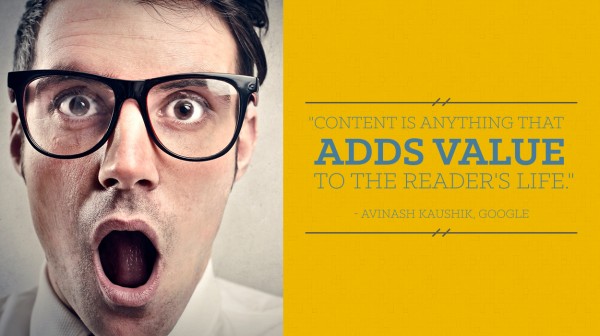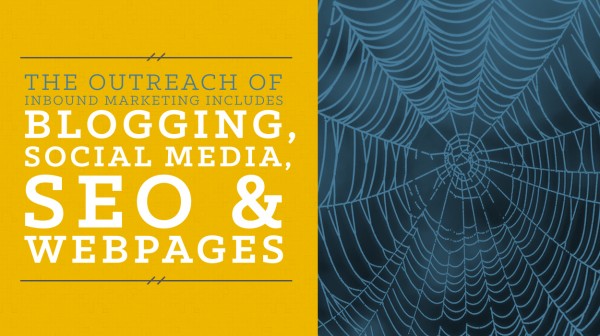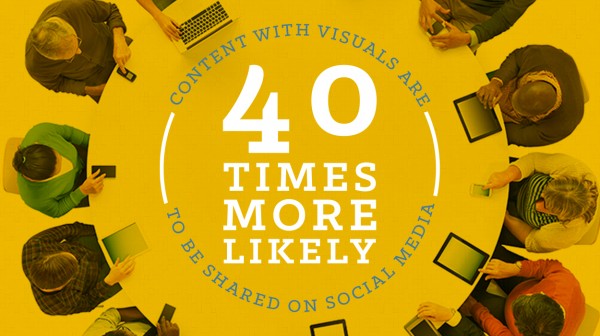Are you utilizing the power of content or inbound marketing for your business or website? In short, it’s about giving your customers the resources they need to make more informed decisions. One of the best ways (we’ve found) to do so is to harness the power of presentations, which are content marketing champions when it comes to merging different media forms. Still unsure what inbound marketing is? Just plain confused about how a presentation can help? Scratch your head no further and read on!
Content/Inbound Marketing 101
Times are changing for marketing. Imagine the old Mad Men era of men smoking cigars arguing over billboard wording, full-page advertisements in newspapers, and cold calls on the phone during dinner time trying to sell you encyclopedias. All of these invasive techniques are known as “disruptive marketing,” because they interrupt your life to make room for their message.
“A disruptive company has one of two goals: design its product or service to match the demand of an emerging market, or re-shape an existing product or service to meet the demand of customers unsatisfied by the current offering.” – Marketing Schools
Things changed when the internet appeared: customers had a lot more control during the buying process. They didn’t need to be told what kind of laundry detergent to buy, they could go online and do the research themselves. People were becoming more connected, knowledgeable, and discerning about the kinds of brands they wanted to be part of.

And lo! From the darkness, inbound marketing was born. By definition: “Inbound marketing refers to marketing activities that bring visitors in, rather than marketers having to go out to get prospect’s attention.Inbound marketing earns the attention of customers, makes the company easy to be found and draws customers to the website by producing interesting content.” (Source)
Customers are drawn into a website because of its shared expertise, which is accomplished by creating content relevant to their lives. This is done through the following channels:
1. Blogging
2. Social Media
3. SEO (Search Engine Optimization)
4. Web Pages
A good inbound marketing strategy optimizes all of those elements to direct customers to the valuable content they are already creating. It’s not about shouting anymore, it’s about sharing. You may already be focused on optimizing a few of these elements; for instance, working on your website or jazzing up social media pages. Successful inbound marketing sites do more than that; they provide different ways for customers to reach your content by optimizing all four.
So… Why Presentations?
“Give them quality. That’s the best kind of advertising.” – Milton Hershey
It’s simple! Presentations touch on all four of the places that customers discover or engage with content:
1. Blogging – You can embed a full presentation within a blog to enhance it, or you can pull individual slides out of an existing deck to use as cover or internal images.
2. Social Media – Thanks to presentation hosting sites like SlideShare, full presentations can be uploaded anywhere. Individual slides can also be shared as image posts on pretty much any social media website.
3. SEO – SlideShare automatically transcribes the text of your presentation when you upload it, which makes it easier for search engines to find. But furthermore, media-rich content that uses video, audio, and text (which presentations can do) rank higher on SEO than plain ol’ text blog posts.
4. Web Pages – Because you can embed presentations, you have an easy way to enhance your site through rich media.
How Can You Make a Presentation Work For You?
There are really two kinds of presentations: the kind you may have already created for a specific purpose, and the kind you will create especially for your marketing strategy. Old presentations will need to be edited, and new presentations will need to be created to become valuable content takeaways for your audience.
Make Them Visual – Content with visuals receive 94% more total views and are 40x more likely to be shared on social media networks. Since presentations are a hybrid of a text post and an image, use this as an opportunity to share impactful, high-res images alongside your content.
Make Them Social – Once you’ve uploaded a deck to a presentation hosting site like SlideShare, put it to work. Share the URL, embed the post everywhere, and even consider enhancing your LinkedIn company page and profile. But go the extra step further: save your slides as images and share them across all of your social media pages. You’ll have an entire presentation’s worth of individual, media-rich posts.
Make Them From Recycled Goods – Whether you want to convert existing blog content into an original presentation or you have some decks gathering dust in old file folders, you don’t have to reinvent the wheel when it comes to making a deck. No matter the subject matter, there is an audience searching the valuable information you’ve probably already written about.
Make Them Useful – Use existing presentations as a starting-off point for other pieces of content. You can expand on their content to create eBooks, blog posts, or even a follow-along webinar. Their usefulness doesn’t have to die after you upload it to SlideShare; the web of content can continue to grow (forever, maybe)!
Make Them Yourself – You don’t need a professional design team to create a great looking deck. Overlay beautiful, high-res images with readable (and tasteful) font on top. It doesn’t have to be brilliant, it just needs to be simple enough to convey your message.
Make Them Deliver Leads – SlideShare has an automatic lead generation form that is simple to use when you upload a presentation. But there are other ways for presentations to bring in leads. Add a call-to-action at the end of your presentation to take the viewers anywhere you’d like. You could use a “read more” link to take them to a blog post, a call-to-action that signs them up for a newsletter, or even a regular ol’ contact form that can get them in touch with your product or services.
Make Them Media Rich – You can embed a presentation with audio and visual elements, making them great places to host existing media you’ve created. Combine your efforts and consider making a “Best Of” presentation that features the highlights of your content marketing campaign in the past year: the possibilities are, as they say, endless.
Make Them SEO Friendly – Presentations naturally receive a lot more Google attention via organic search than most other types of content posts. Some ways to enhance the SEO power of an existing presentation is to utilize keywords, link to other relevant content, and to “namedrop” relevant businesses/thought leaders on social media.
Make Them Educational – 65% of people are visual learners, which means that presentations are a fantastic way for your audience to connect with the information they are searching for. Be sure that your presentations are written for the right audience and are loaded with practical takeaway information.
“By aligning the content you publish with your customer’s interests, you naturally attract inbound traffic that you can then convert, close, and delight over time.” – Hubspot
The value of a presentation is undeniable for a content marketing strategy: customers are looking for information, and presentations deliver that information in a multi-faceted way. If you aren’t currently using them to reach your audience, start now.
Question: Does your inbound marketing strategy include presentations?

